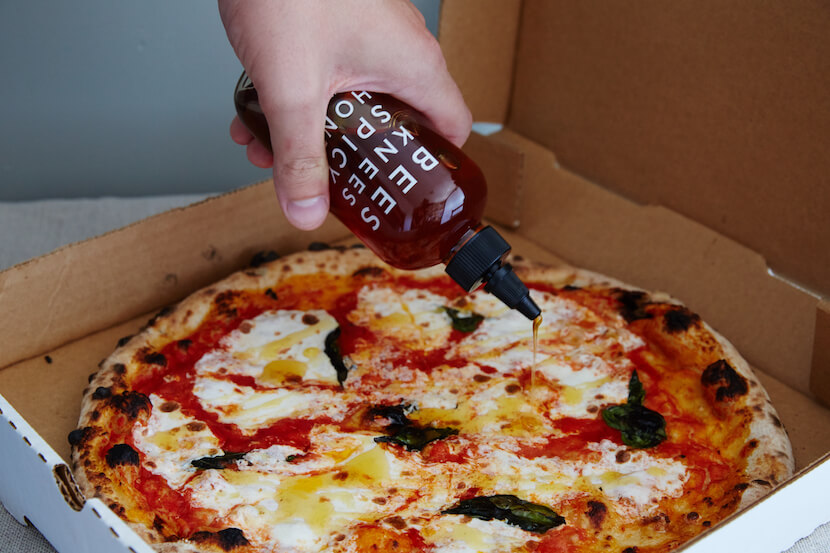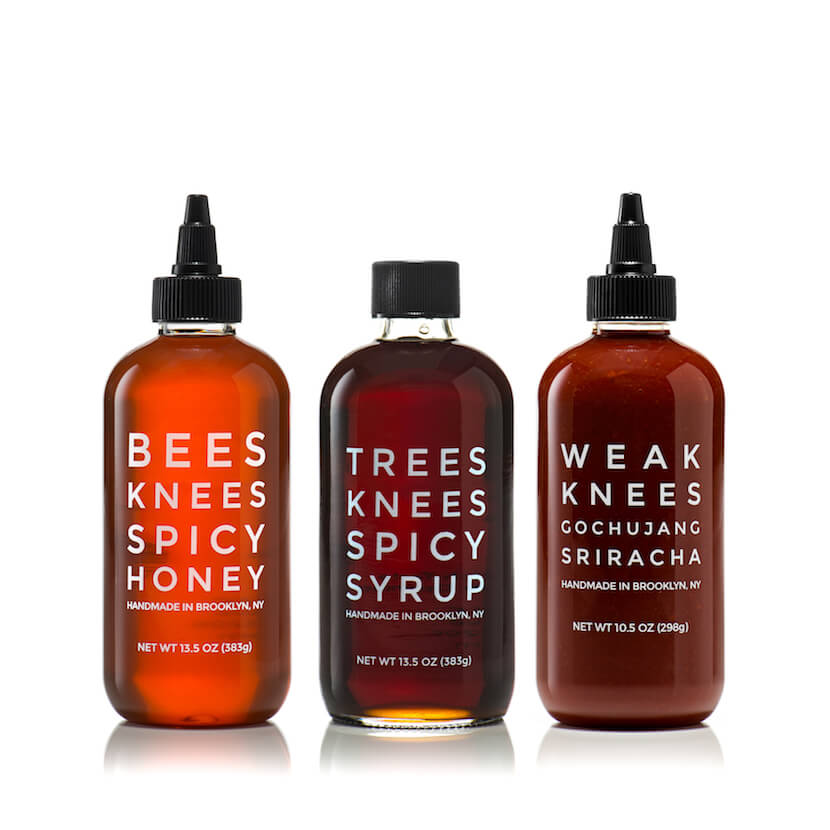Casey and Morgen, the co-founders of Bushwick Kitchen (formerly MixedMade), planned to build an eCommerce company from scratch in 30 days.
What started as an exercise in time-strapped entrepreneurship turned into a successful venture. Within 10 months, they had sold thousands bottles of honey and been covered in Bon Appétit, Vanity Fair, Esquire, and more.
Much has been written about their journey and their wild experiment to establish a business in 30 days, but I was most interested in finding out how an overnight success continues keeps up the momentum.
I had the pleasure of interviewing Ted, a college friend of Morgen’s who has since joined the company as an additional partner, about what the company has been up to since their initial blockbuster success.
The Bushwick Kitchen Backstory, in a Nutshell
Bushwick Kitchen started when two friends, Morgen, a serial entrepreneur who was always up for a challenge, and Casey, a foodie, came up with a challenge to try to establish a business – from idea to delivery – in one month.
Ted explains:
“Everyone wants to do something, but it’s very easy to say, “Oh, I’ll do that after the New Year,” or, “Oh, I’ll do that after my birthday,” or, “I’ll do that during the summer time.”
The idea was to conceive and push an idea out as quickly as possible to reduce those roadblocks. So, Morgen and Casey combined their passions and set off to create products that bring together unique flavor profiles, and MixedMade spicy honey was born.

The idea worked.
Within a month, Bushwick Kitchen was up and running, and within 10 months, they’d sold $170,000 worth of honey.
Moving from the Web to the Racks
After their success, they needed to look into how to make the company sustainable in the long run.
“We wanted to try to smooth that out across the entire calendar year and get away from this notion that not much happens between Q1 and Q3 and then we try to make it all up in Q4.”
One way of doing that is to diversify. So instead of being an online only eCommerce site, Bushwick Kitchen sought to build up their retailer network. In 2014, there were only a handful of retailers carrying their products. They started 2015 with the goal of getting onto as many shelves as humanly possible.
“In addition to that, we also wanted to stop being a one-trick pony with spicy honey. We thought, ‘How can we add a couple more products to our portfolio?’” They developed and launched two new products – Trees Knees Spicy Syrup and then Weak Knees Gochujang Sriracha.

How to Get Stocked by Retailers
To get their product on more shelves, they started where most people do – Google. They began by searching for and downloading lists of local retailers. They looked online to find the 10 best local cheese shops, meat shops, specialty grocery shops, etc.
The next step?
Call the stores.
“I’d say, ‘Hey, my name is Ted Barbeau. I work with Bushwick Kitchen. We make a spicy honey. Would you have any interest in trying it?’ And what we quickly found was the people who were picking up the phones weren’t necessarily the decision makers that were going to greenlight a new product.”
The people who picked up were often shop clerks or other employees, someone who, as Ted says – “Is doing 250 different things at one moment and did not have the time to try to understand what a spicy honey was.”
It became obvious to them that this tactic wasn’t working. So their alternative was to send emails.
“People today generally look at email as more impersonal. They think you’re probably not going to get a response, everyone hates email, nobody reads their email, etc. And furthermore, how are you even going to find the email of the right person?”
But they found that email worked incredibly well in this space. Probably because they were approaching boutique stores, with probably less than 20 employees. This meant that whoever started the shop likely registered the domain name and had all the emails (to “info@specialtyshop.com” or “hello@boutiquestore.com”) forwarded to them.
“We asked ourselves, how do we reach out to 100 new retailers every single week? The answer was that it involves a lot of work. And it’s a lot of manual work. It’s a lot of finding retailers. It’s a lot of finding email addresses. It’s a lot of emailing. But the rewards were really, really great.”
Check out Bushwick Kitchen’s fantastically detailed blog post about their process & tips.
One of the special ingredients in Bushwick Kitchen’s success has been the founders unique backgrounds. They bring startup mentality to an eCommerce business – namely Silicon Valley’s reputation for scaling quickly.
When they approached retailers, their attack plan wasn’t typical of a fledgling food brand.
Instead of going to trade shows and farmer’s markets, they strategized how to reach the most retailers in the shortest amount of time.
Another place you can see Silicon Valley’s impact on the brand is in their attention to content marketing, that you don’t often see among other eCommerce brands.
Small eCommerce stores often have a tough time figuring out the place content marketing has in their business, namely because tactics like blogging take tons of time without guaranteed return. And knowing what your audience wants isn’t always so easy.
Bushwick Kitchen’s blog reads quite a lot like Groove’s blog – a journey of 30 days from start to finish. What motivates their content marketing?
“We’ve had a lot of success, going from a little bootstrapped company selling a couple of bottles of honey a month to a much more substantial food company with three products and a large retail footprint,” Ted says. “We want to share what we’ve learned and help others in the same position.”
Besides content marketing, Bushwick Kitchen mostly focuses on how press can help them grow brand awareness.
While Bushwick Kitchen has had success with larger press outlets, blog, and TV, they’ve seen much better results from smaller, niche blogs.
“We were on the pages of Vanity Fair – it was a beautiful spread. The pictures were great. But it actually did almost nothing for us in a measurable sense. A lot of people probably saw our products, but it’s impossible to tell if any went on to buy. It’s a great branding piece and awesome to have in the portfolio, but at the end of the day, we can’t measure sales from it.”
In contrast, blogs like Budget Bytes and Uncrate target a very specific, highly engaged audience.
Looking towards the future, they plan to do things that are more typical of a growing food brand, like investing in attending larger, more expensive trade shows.
“These really do bring such a high number of retailers and buyers from around the country, people that we might not find otherwise,” Morgen explains.
They hope efforts like these can help them reach their 2016 goal: Growing from 250 retailers to 1,000 by the end of the year.



